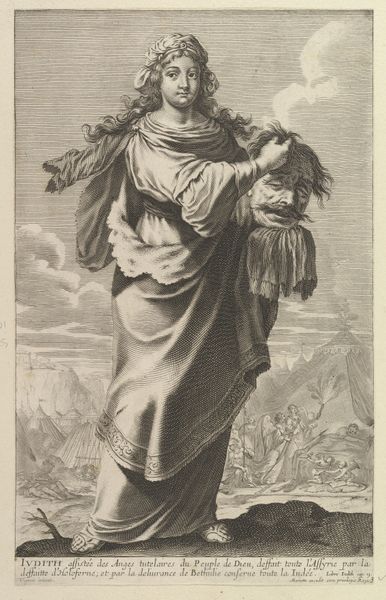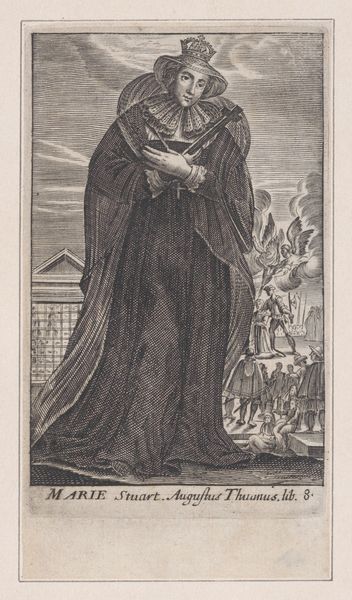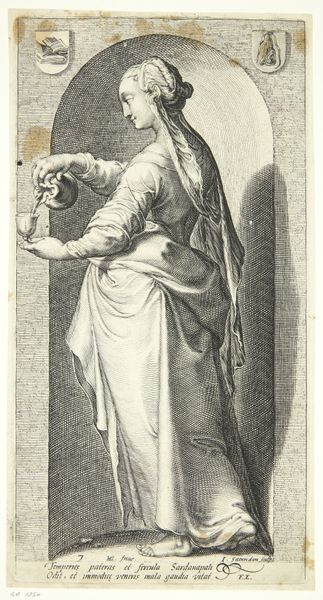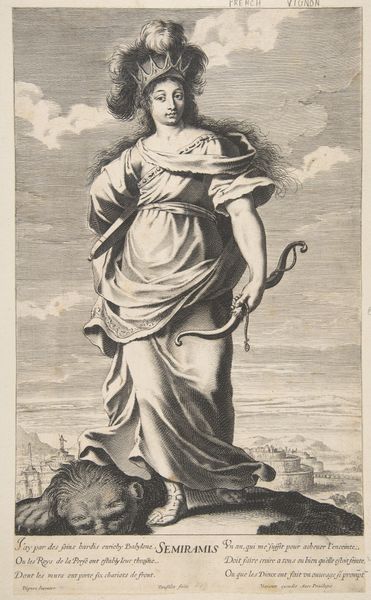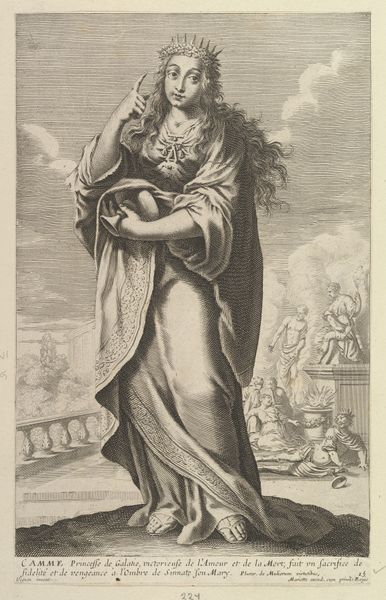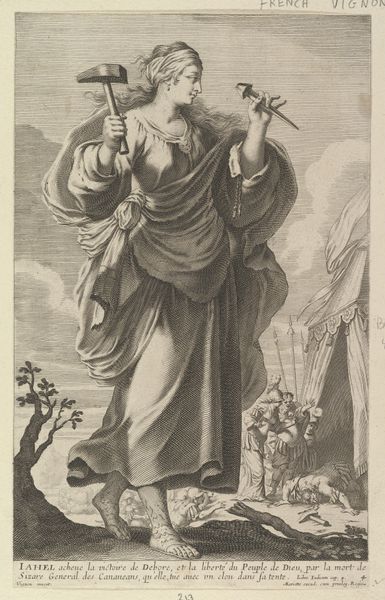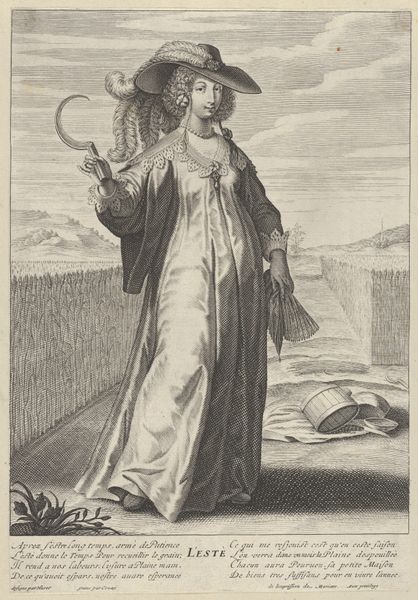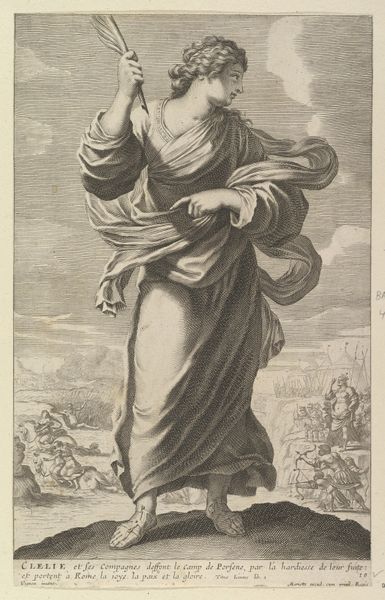
drawing, print, engraving
#
portrait
#
drawing
#
allegory
#
baroque
# print
#
old engraving style
#
caricature
#
figuration
#
men
#
line
#
portrait drawing
#
history-painting
#
engraving
#
realism
Dimensions: sheet: 13 5/16 x 8 3/8 in. (33.8 x 21.2 cm)
Copyright: Public Domain
Editor: Here we have Gilles Rousselet’s 1647 engraving, "Artémise," currently housed at the Met. The stark lines and the somber figure create a real sense of mourning. I’m curious about the symbols at play here. What do you see in this piece? Curator: What strikes me is the way Rousselet situates Artémise within a complex web of power, gender, and memory. This isn’t just about grief, but also about female agency in a patriarchal society. Consider Artémise's legendary act of drinking her husband’s ashes – it’s both horrific and a powerful statement of possession, a refusal to let go, to be controlled by conventional mourning practices. Editor: So you see her action as an act of defiance, not just grief? Curator: Precisely. And look at the other elements. The architecture, the allegorical figures in the background – they speak to the ways in which powerful women throughout history have navigated their roles, manipulated symbols, and challenged expectations, often through acts considered extreme. Think about how her story has been retold across centuries. What does it mean that Rousselet chose to represent this particular moment, and how might it resonate differently with various audiences over time? Is this really reverence for the dead or perhaps, defiance in a world order of men and memory? Editor: That reframes the way I see it. It’s not just a historical depiction but also a comment on women’s limited power and ability to take what agency they could. I had not seen this powerful symbolic aspect. Curator: Absolutely! It encourages us to question traditional interpretations and consider the agency of historical figures within their societal context. These symbols and lines speak so clearly about agency through the ages, as history attempts to erase the narratives and choices of these formidable women.
Comments
No comments
Be the first to comment and join the conversation on the ultimate creative platform.
